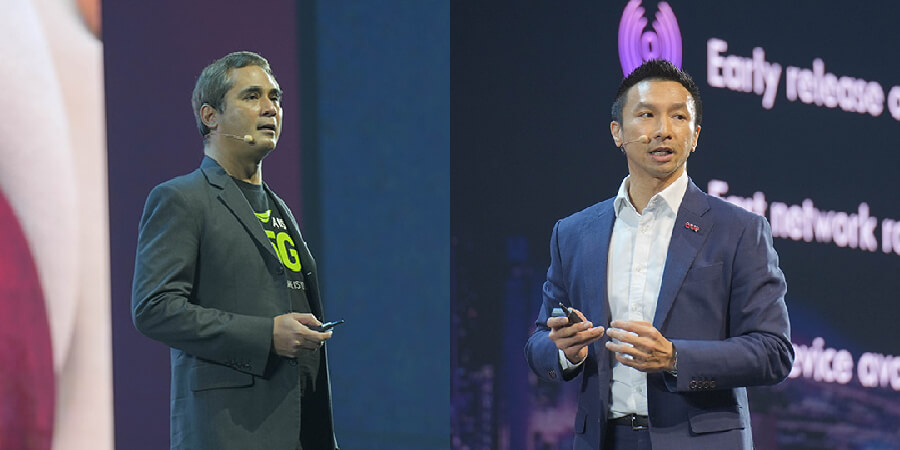Thailand is one of the very first countries across the globe that has successfully deployed the 5G spectrum.
Thai regulators have so far deployed 700 megahertz as low band for 5G, 2.6 gigahertz as mid band for 5G, and 26 gigahertz as high band. And 5G deployments come with hefty price tag. Now, the challenge for operators is how monetize their massive investments.
Speaking at the Huawei Mobile Broadband Forum 2022, Thailand’s telecom giants, AIS and True have given their insights on how to realize all the promises of 5G, and how they enable the fast growth of 5G in Thailand, as well as their other plans to develop this technology in the future.
In his speech, “Cross-Generation 5G Experience for Business Success,” Saran Phaloprakarn, the head of mobile and consumer products department of AIS Thailand, shared the monetization strategies of telecom operators in the country.
First, operators deploy 5G nationwide very quickly by using the mid band in the city area and the low band in suburban and rural. “When we deployed 5G 2 years ago, the only phone that supported the mass customer to use 5G at that time was iPhone 12 and the price is quite high. So only a number of customers can use 5G network. Until last month, the basic entry level phones started to come to the market at the price below $200,” said Phaloprakarn.
He added that to further encourage users to migrate to 5G, there needs to be more options for devices, as well as subsidies from operators.
However, he said that for subscribers, the currently available 5G services are just as similar to what 4G is offering. Phaloprakarn explained, “5G comes with a promise, three promises actually, that it will come with very high speed or eMBB. It will come with very low latency, or URLLC, ultra-reliable latency communication, and it will come with very low power or MMTC.”
Also, they would need all these features require an ecosystem to be deployed so they are planning to utilize millimeter wave devices and have an ecosystem ready by next year.
Looking ahead, Phaloprakarn also suggested that in 2025, operators need to upgrade the radio’s network to be fully operational for 5G advancements. He emphasized the need for an autonomous network (AN) to help minimize operational costs and maintenance. “Operators also need to upgrade the core network towards cloudification. However, one thing that is very important is to upgrade the network to be more automated, which we call an autonomous network or AN. The purpose of AN is to reduce the cost of managing the network by using people, changing to be more automated by using machines.”
And to achieve all the promises of 5G including fast, reliable speed, data rich visualization, automation, intelligent efficiency, and trusted connections, he said that they would need to help their customers shift from 4G to 5G. He added that the road towards migration to 5G and 5.5G will be visualized by 2025.
Meanwhile, the chief commercial officer of True Thailand, Tanaphon Manavutiveth, stressed the fast-growing 5G development in the country, thanks to the availability of Thailand’s ecosystem.
“If you look at the 4G subscriber from year one moving to year two, 147,000 moving to 1 million. Back then, we were like we are growing and then from 1 million to 4.7 - we are growing 4.7 times. But you look at the 5G today, we are growing from 800,000 to up to 5 million. And by the end of this year, we are definitely hitting more than 10 millions altogether in Thailand. Because of all the network facilities, everything is ready for us here in Thailand,” Manavutiveth said.
He stressed the five key things that are driving their 5G fast expansion, and these are the network, device, use case, partnership, and regulation. “Why is the network the number one thing? You can have the device, many devices around the world. You can have so many use case partners, you don't have the network, there's nothing you can do. So the network is the core of everything here, and then the device use case, partnership and regulation.”
He also compared Thailand’s success to other regional neighbors, and predicts further growth in the next year. “Now, if you look at the ASEAN countries here, Thailand, we are not a big country here, but we are the second largest, fastest growing of the 5G. We are here at 9.2%. If you look at the number one, it says it would be Singapore. It's the international hub. It's at 13.9%. We are growing really fast. Maybe next year we could catch up. We will find out.”
He added that by the end of 2022, of all the operators, in Thailand, True will grow even further and acquire more than 10 million of 5G customers.
They forecast that by the end this year, over 85% of the country’s population will be covered by the 5G network.
He also pointed out that their focus for these innovations is on the business-to-consumer success. The 5G developments will be for the improvement and progress across different sectors including health care, education, agriculture, and manufacturing, as well as smart cities.
Among the notable projects that True had launched, Manavutiveth talked about the Siriraj 5G Smart Hospital project by True’s, in partnership with Huawei and Thailand’s National Broadcasting and Telecommunications Commission. One of its features is the unmanned vehicle for contactless delivery of medical supplies and solutions in remote areas. The hospital also boasts 5G capabilities including 5G portable medical boxes, 5G medical carts, and 5G smart hospital beds.
Manavutiveth said that they aim to continue to help expanding 5G coverage in order to grow as fast as they can. And by doing so, they can build stronger partnerships in the future.





